Located in the city of Agra in northern India, the Taj Mahal is a world-renowned mausoleum that draws millions of visitors each year. Built in the 17th century by the Mughal Emperor Shah Jahan, the Taj Mahal is a testament to the enduring love between Shah Jahan and his wife, Mumtaz Mahal. In this blog post, we will explore the history, images, timings, story, and facts of the Taj Mahal, a true architectural masterpiece that continues to inspire and awe people around the world.
The Taj Mahal is a stunning white marble mausoleum located in Agra, India, and is a tribute to the emperor’s beloved wife, Mumtaz Mahal, who died during childbirth. The Taj Mahal is considered one of the most beautiful historical places in the world and is a UNESCO World Heritage Site.
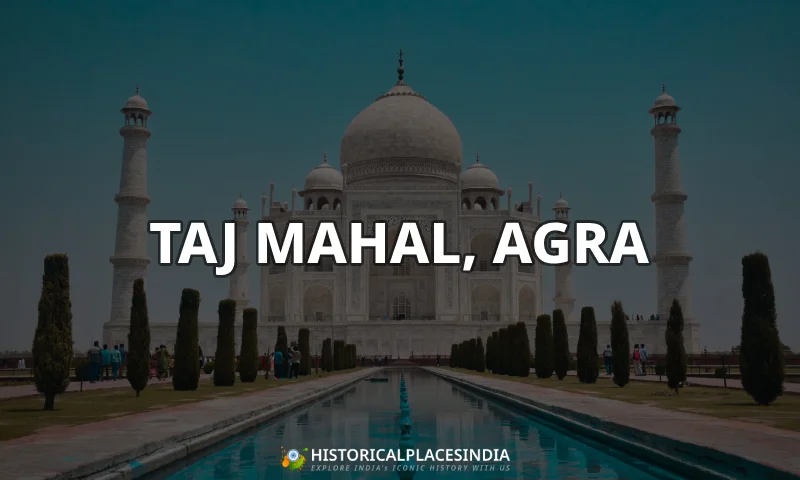
It is located in the city of Agra, which is located in the northern Indian state of Uttar Pradesh. The city is easily accessible by train, bus, or car, and is a popular tourist destination. The Taj Mahal is open to the public every day except Friday, and the best time to visit is during the cooler months from October to March.
Taj Mahal Agra, India – Everything You Need To Know
Contents
The Taj Mahal is an architectural marvel, with its white marble exterior and intricate carvings. The mausoleum is surrounded by sprawling gardens and is situated on the banks of the Yamuna River. The main entrance to the Taj Mahal is through the South Gate, which leads to the Great Courtyard. From there, visitors can enter the mausoleum through the main entrance, which is adorned with intricate carvings and inlaid with precious stones. It is one of the most popular historical places in Agra, India.
Inside the mausoleum, the tombs of Shah Jahan and Mumtaz Mahal are located in the main chamber. The tombs are made of white marble and are surrounded by intricate carvings and inlaid with precious stones. The walls of the main chamber are adorned with beautiful calligraphy, and the ceiling is decorated with intricate patterns.
There are several other buildings and structures located within the Taj Mahal complex, including the Mosque, the Jawab, and the Garden of Paradise. The Mosque is located to the left of the main entrance and is used for prayer. The Jawab is located to the right of the main entrance and is used as a rest house for visitors. The Garden of Paradise is located behind the Taj Mahal and is a beautiful oasis of greenery and flowers.
In addition to the main mausoleum, the Taj Mahal complex also includes several smaller tombs and buildings, including the tombs of other members of the Mughal royal family. These tombs are located in the eastern and western wings of the complex.
| Information | Details |
|---|---|
| Best Time To Visit | October to March |
| Entrance Fee (Indian) | INR 50 |
| Entrance Fee (Foreigners) | INR 1,100 |
| Timings to Visit | Sunrise to Sunset |
| Address | Taj Mahal, Agra, Uttar Pradesh 282001 |
| Camera Charges | INR 200 |
| Video Camera Charges | INR 25 |
| Nearest Metro Station | Agra Fort |
| Time Required to Visit | 2-3 hours |
| Official Website | https://tajmahal.gov.in/ |
| Phone Number | +91-562-2227261 |
Taj Mahal History
The history of the Taj Mahal dates back to 1632 when Mumtaz Mahal died during childbirth. Shah Jahan was devastated by her death and decided to build a monument in her honor. He commissioned the construction of the Taj Mahal, which took over 20 years to complete. The mausoleum was built by more than 20,000 workers and craftsmen and is considered a masterpiece of Mughal architecture.
The Taj Mahal took over 20 years to complete and was built by more than 20,000 workers and craftsmen. It is a masterpiece of Mughal architecture, with its white marble exterior, intricate carvings, and beautiful gardens. The mausoleum is located on the banks of the Yamuna River and is surrounded by sprawling gardens filled with flowers and trees.
Taj Mahal Images in HD
Here are some Taj Mahal images that capture the beauty and grandeur of this iconic mausoleum:
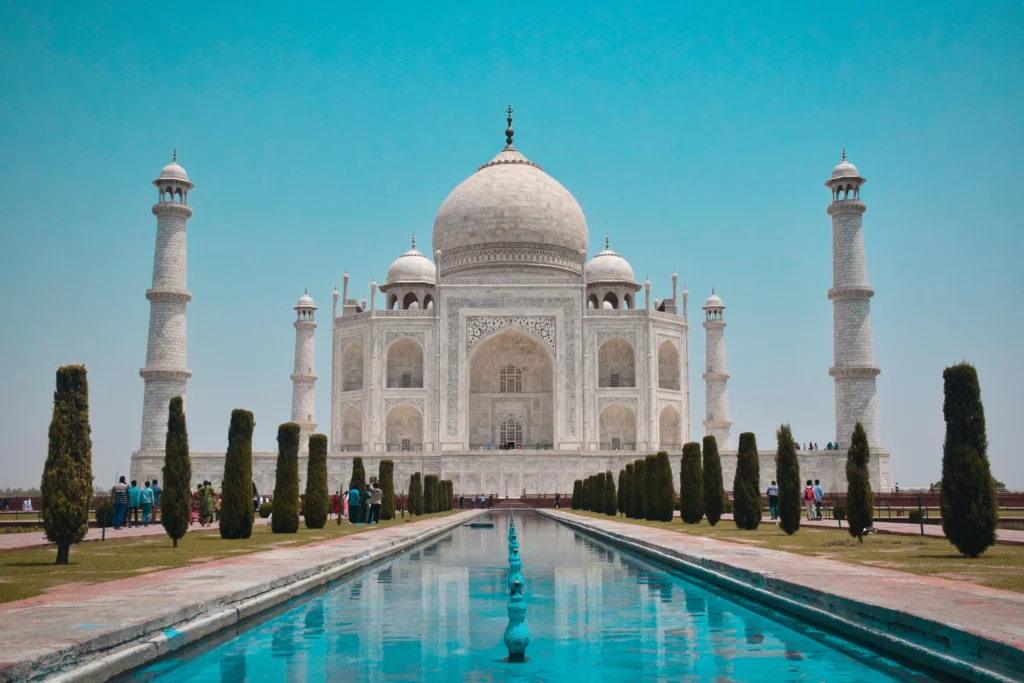
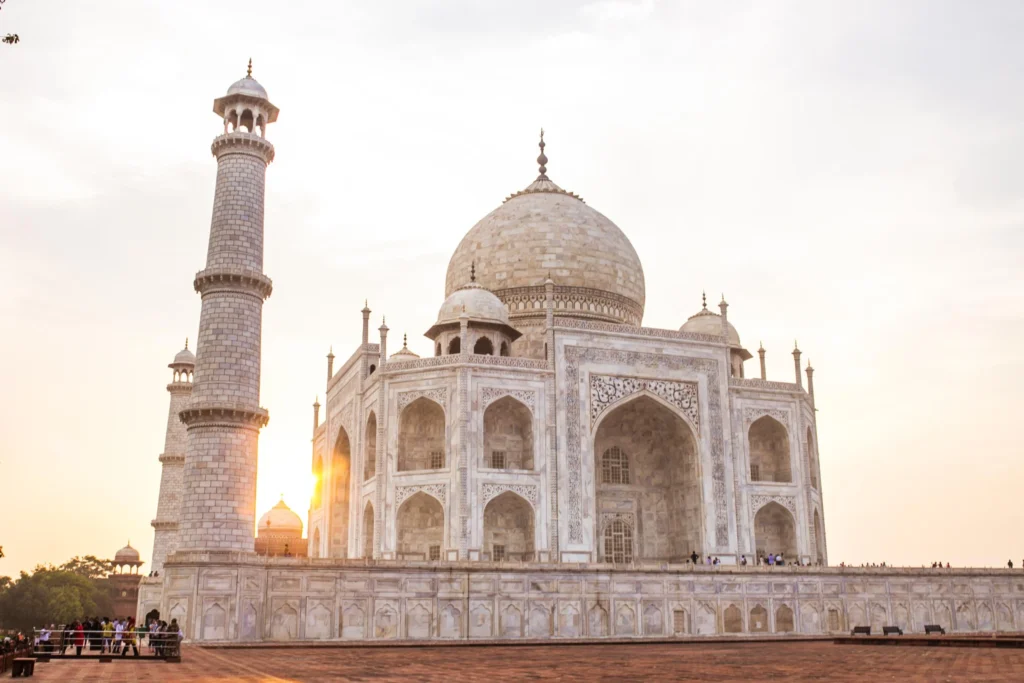

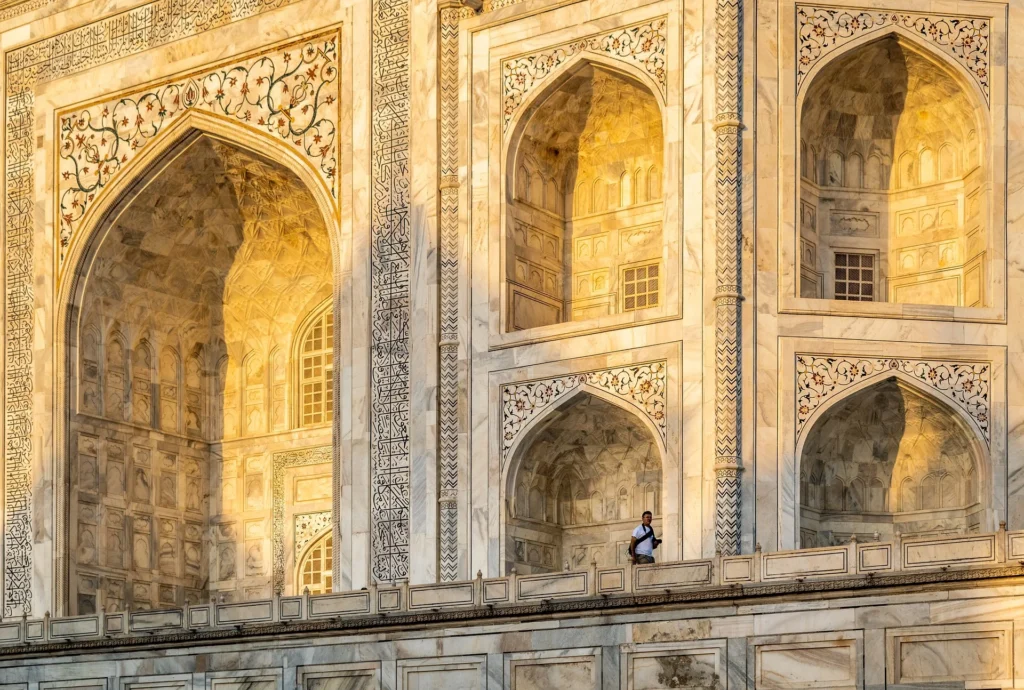
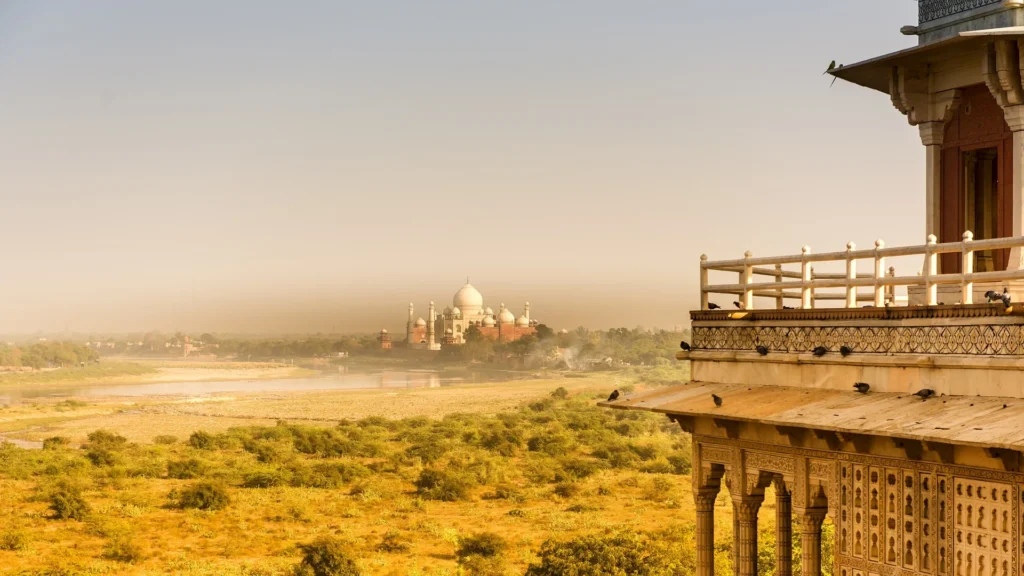
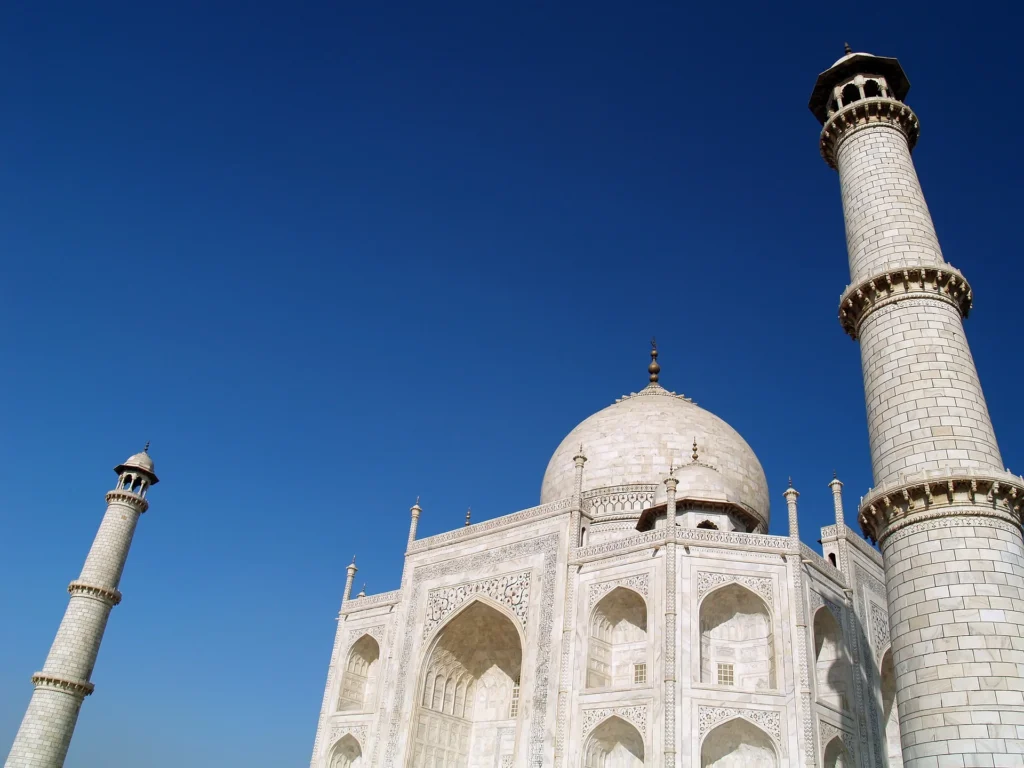
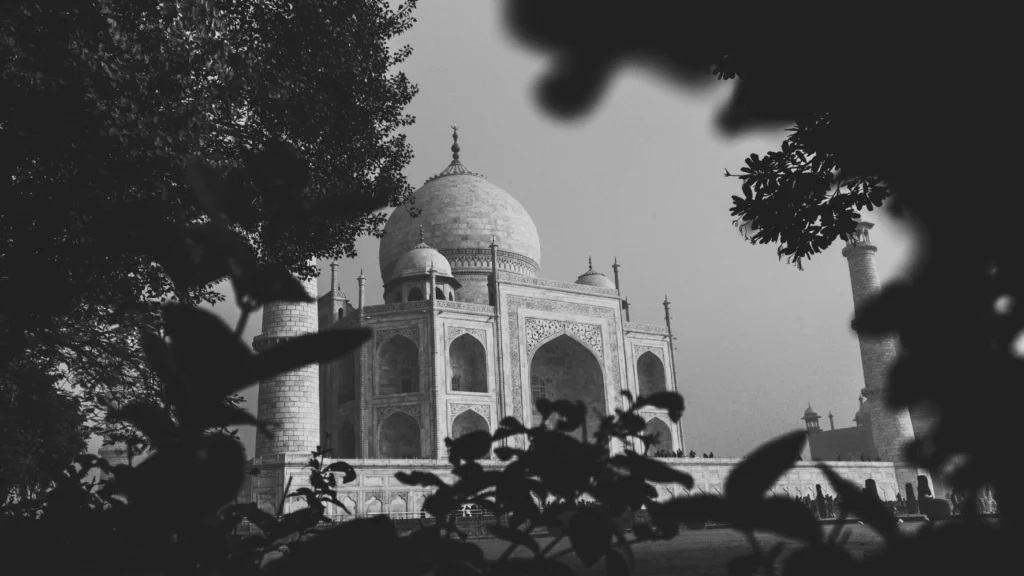
As you can see, the Taj Mahal is a truly breathtaking and awe-inspiring sight. Its white marble exterior, intricate carvings, and beautiful gardens make it one of the most iconic landmarks in India. These images give you a sense of the scale and magnificence of the Taj Mahal, and provide a glimpse into its rich history and cultural significance. Whether you see it in person or through these images, the Taj Mahal is a place that will stay with you long after you leave.
Story Behind Taj Mahal
The story of the Taj Mahal begins with the love between Shah Jahan and Mumtaz Mahal. Shah Jahan was the Mughal Emperor, a powerful and influential ruler who ruled over a large portion of India. Despite his position and wealth, Shah Jahan was deeply in love with Mumtaz Mahal, and the two were devoted to each other.
In 1631, Mumtaz Mahal died while giving birth to their 14th child. Shah Jahan was devastated by her death, and decided to build a monument in her honor that would stand the test of time. He commissioned the construction of the Taj Mahal, and oversaw the project himself, making sure that every detail was perfect.
Taj Mahal Entry Fees & Timings
The Taj Mahal is located in Agra, India, and is open to the public every day except Friday. The best time to visit the Taj Mahal is during the cooler months from October to March, when the weather is pleasant and comfortable.
The entry fees for the Taj Mahal vary depending on the type of ticket you purchase. For Indian citizens, the entry fee is INR 50 for the main mausoleum and INR 20 for the east and west wings. For foreign visitors, the entry fee is INR 1,100 for the main mausoleum and INR 550 for the east and west wings. Children under the age of 15 are allowed to enter for free.
There are also several other ticket options available, including a combined ticket for the Taj Mahal and Agra Fort, and a ticket for the night viewing of the Taj Mahal. Night viewing is only available on the full moon night and the two nights before and after the full moon.
The timings for the Taj Mahal are from sunrise to sunset, with the last entry allowed at 4:30 PM. The Taj Mahal is closed to the public on Fridays, as it is used for prayer.
Note: Check updated Fees & Timing on the official website – From Here
Facts About Taj Mahal
There are several interesting facts about the Taj Mahal that make it a truly unique and fascinating place. For example, the Taj Mahal is made entirely of white marble, which was brought from the quarries of Makrana in Rajasthan. The marble was then transported to Agra by elephant and camel and was carved by skilled craftsmen.
The Taj Mahal is also home to a number of precious stones and gems, which were inlaid into the marble to create intricate patterns and designs. These stones include diamonds, rubies, emeralds, and sapphires, among others.
Despite its beauty and grandeur, the Taj Mahal is not just a symbol of wealth and power. It is also a symbol of love and devotion and is a testament to the enduring bond between Shah
Conclusion
In conclusion, the Taj Mahal is a must-see destination for anyone visiting India. Its history, beauty, and significance make it a truly unique and unforgettable experience. If you have the opportunity to visit Agra and see the Taj Mahal for yourself, you will not be disappointed. It is a truly awe-inspiring and breathtaking sight that will stay with you long after you leave.